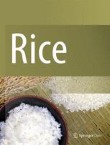Citation Impact 2023
Journal Impact Factor: 4.8
5-year Journal Impact Factor: 5.4
Source Normalized Impact per Paper (SNIP): 1.490
SCImago Journal Rank (SJR): 1.304
Speed 2023
Submission to first editorial decision (median days): 6
Submission to acceptance (median days): 100
Usage 2023
Downloads: 685,872
Altmetric mentions: 254
